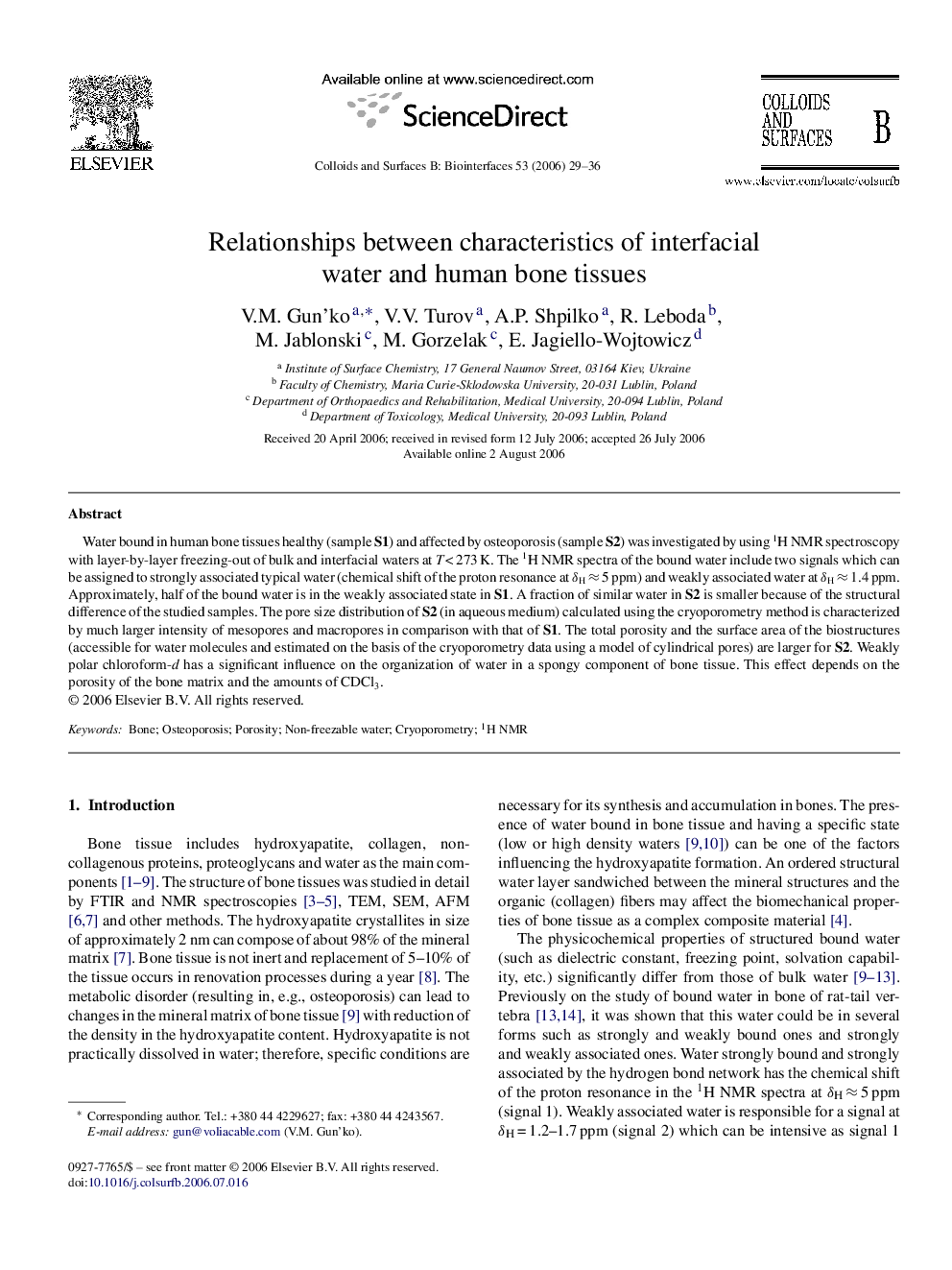| Article ID | Journal | Published Year | Pages | File Type |
|---|---|---|---|---|
| 602949 | Colloids and Surfaces B: Biointerfaces | 2006 | 8 Pages |
Water bound in human bone tissues healthy (sample S1) and affected by osteoporosis (sample S2) was investigated by using 1H NMR spectroscopy with layer-by-layer freezing-out of bulk and interfacial waters at T < 273 K. The 1H NMR spectra of the bound water include two signals which can be assigned to strongly associated typical water (chemical shift of the proton resonance at δH ≈ 5 ppm) and weakly associated water at δH ≈ 1.4 ppm. Approximately, half of the bound water is in the weakly associated state in S1. A fraction of similar water in S2 is smaller because of the structural difference of the studied samples. The pore size distribution of S2 (in aqueous medium) calculated using the cryoporometry method is characterized by much larger intensity of mesopores and macropores in comparison with that of S1. The total porosity and the surface area of the biostructures (accessible for water molecules and estimated on the basis of the cryoporometry data using a model of cylindrical pores) are larger for S2. Weakly polar chloroform-d has a significant influence on the organization of water in a spongy component of bone tissue. This effect depends on the porosity of the bone matrix and the amounts of CDCl3.
